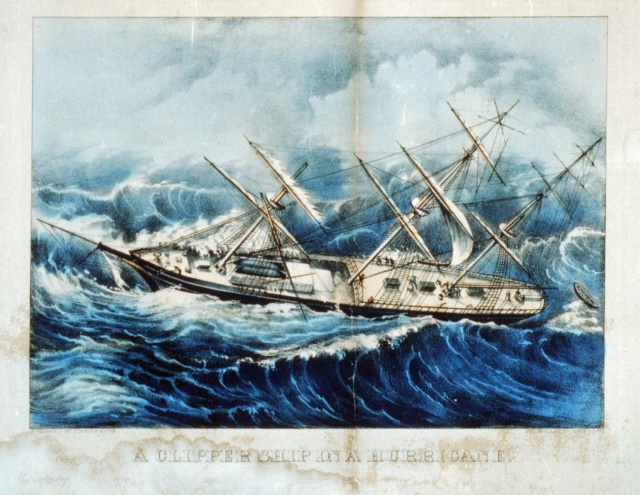Hurricane season officially begins June 1. While in some ways this is an arbitrary date because nature sets its own rules and does not follow a man-made calendar, let’s just say it’s time to keep a weather eye out!
In the last 400 years there have been some tremendous storms on the Chesapeake Bay, including this one from the 1700s that became known as “George Washington’s Storm.” Although Washington could not have known the science behind hurricanes, he certainly understood that this storm was something out of the ordinary, and he chronicled the storm in detail.
And so, as we gear up for another Chesapeake Bay hurricane season, here’s looking back at “George Washington’s Storm.”
Excerpted from Great Storms of the Chesapeake:
He may have led the Continental Army through the Revolutionary War, but before George Washington became a Founding Father, he was first and foremost a farmer. And like any good farmer, he kept an eye on the weather that affected his vast estate at Mount Vernon, Virginia. The mansion overlooks the Potomac River, not far from Chesapeake Bay. While majestic, the view also left Washington’s home vulnerable to the Chesapeake’s fiercest storm—the hurricane.
On July 19, 1788, a storm began forming near Bermuda that would become known as “George Washington’s Hurricane.” The storm that struck the lower Chesapeake full-on would be detailed in Washington’s journal when the eye passed directly over Mount Vernon.
At a little after midnight on July 23, the storm pounced upon the Chesapeake region and “blew a perfect hurricane, tearing down chimneys, fences, etc.” Accounts say the winds felled large trees, leveled crops and even shifted houses off their foundations.
A storm like that coming at harvest time was particularly devastating to the farms and orchards of the region. Trees heavy with fruit were blown down or their weighted limbs snapped. Corn was flattened and the last of kitchen gardens shredded.
The storm was just as bad on the water. Ships of all sizes that attempted to ride out the storm sank or were pounded to splinters at their moorings. In Portsmouth, Va., accounts say a large ship was floated by the storm surge into the center of town.
It came to be known as “George Washington’s Storm” because of his detailed journal descriptions of the storm and its aftermath. As always, Washington was focused not only on observation, but on the impact the storm would have on the roughly 8,000 acres he owned surrounding his home.
On July 24, Washington wrote: “Thermometer at 70 in the morning, 71 at noon and 74 at night. A very high N.E. wind all night which this morning being accompanied with rain became a hurricane driving the miniature ship Federalist from her moorings and sinking her; blowing down some trees in the groves and about the houses, loosning the roots & forcing many others to yield and dismantling most in a greater or lesser degree of their Bows, and doing other and great mischief to the grain, grass &c. and not a little to my mill race; in a word it was violent and severe more so titan has happened for many years. About noon the wind suddenly shifted from N.E. to S.W. and blew the remaining part of the day as violently from that quarter. The tide about this time rose near or quite 4 feet higher than it was ever known to do driving Boats &c. into fields where no tide had ever been heard of before, and must it is apprehended have done infinite damage on their Wharves at Alexandria, Norfolk, Baltimore &c.”
According to weather records, the 1788 hurricane followed a path—and shared an intensity—very similar to the 1933 storm that would carve Ocean City’s inlet. Consequently, this makes “George Washington’s Hurricane” one of the more intense storm on Chesapeake Bay—and we have the Founding Father himself to thank in part of keeping good records of the storm.




















